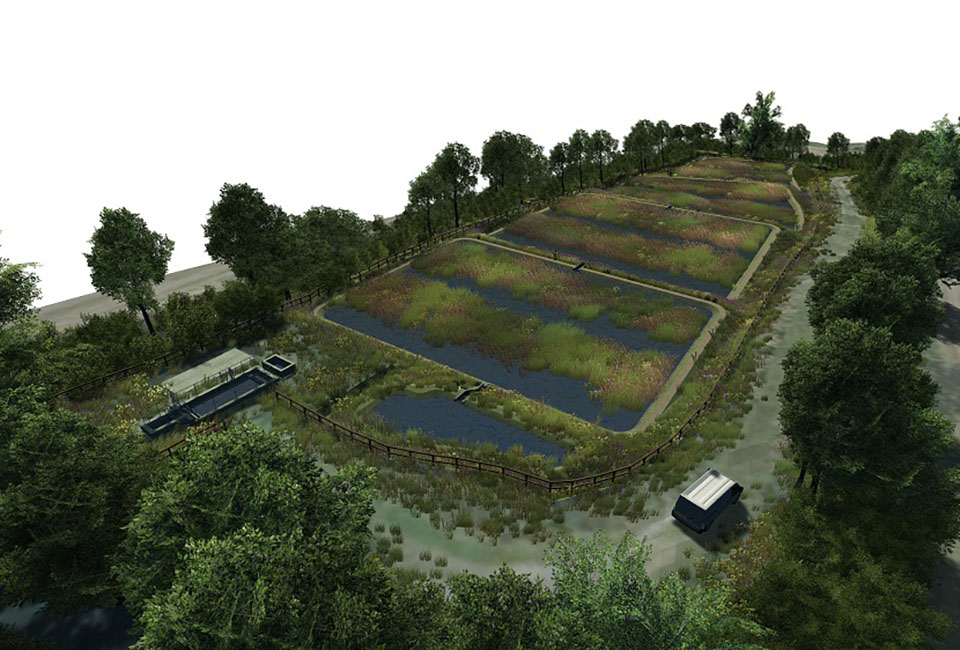First nature-based wastewater treatment in Yorkshire completed at Clifton works

10/7/2021
Sustainable wastewater treatment is underway at Yorkshire Water’s Clifton wastewater treatment works, near Doncaster after the planting of 20,000 wetland plants.
The site has been transformed into an integrated constructed wetland, with the clay in the ponds and the plants naturally removing phosphorus from treated wastewater before it is returned to the environment.
The wetland ponds will provide the only wastewater treatment on site - the first of its kind in Yorkshire – as a trial to monitor nature-based treatment processes.
An area of interconnected ponds approximately the size of three Olympic swimming pools have been planted as part of the project.
Michael Housby, lead project manager at Yorkshire Water, said: “This project is the first of its kind in Yorkshire and will provide a range of benefits at our Clifton treatment works, not only for the way we treat wastewater, but also for the local environment.
“The clay and wetland plants will naturally treat the wastewater at Clifton, reducing the reliance of energy-heavy treatment processes, providing a sustainable way to remove phosphorus while creating wildlife diversity and achieving a biodiversity net gain.
“This project will hopefully lead to the creation of other similar sites across Yorkshire and we have already earmarked a number of treatment works around the region where we believe nature-based solutions can be implemented.”
Robert McTaggart, technical director at Stantec, said: “It has been fantastic to work in this collaborative partnership with Yorkshire Water and the Environment Agency to create a new integrated constructed wetland at Clifton wastewater treatment works. Together we have blended open water ponds with shallow vegetated marshes to closely resemble a natural wetland. The outcome is a nature based low carbon solution which simulates physical, chemical, and biological treatment processes to remove phosphorus in a sustainable way.”
Chris Mathers from BarhaleDoosan said: “It has been great to be involved with such a ground breaking programme and to see, with the completion of the planting what are, quite literally, the first green shoots of a new future for the site.
“This is a signature project and an important stepping-stone to creating new approaches to waste treatment.”
As well as providing a sustainable and energy-efficient way of treating the water, the wetland will also increase biodiversity in the area and attract a range of wildlife including bees and other pollinators, breeding birds, amphibians and reptiles.
Yorkshire Water partners Stantec and BarhaleDoosan JV have designed and constructed the wetland, which is now in operation.
